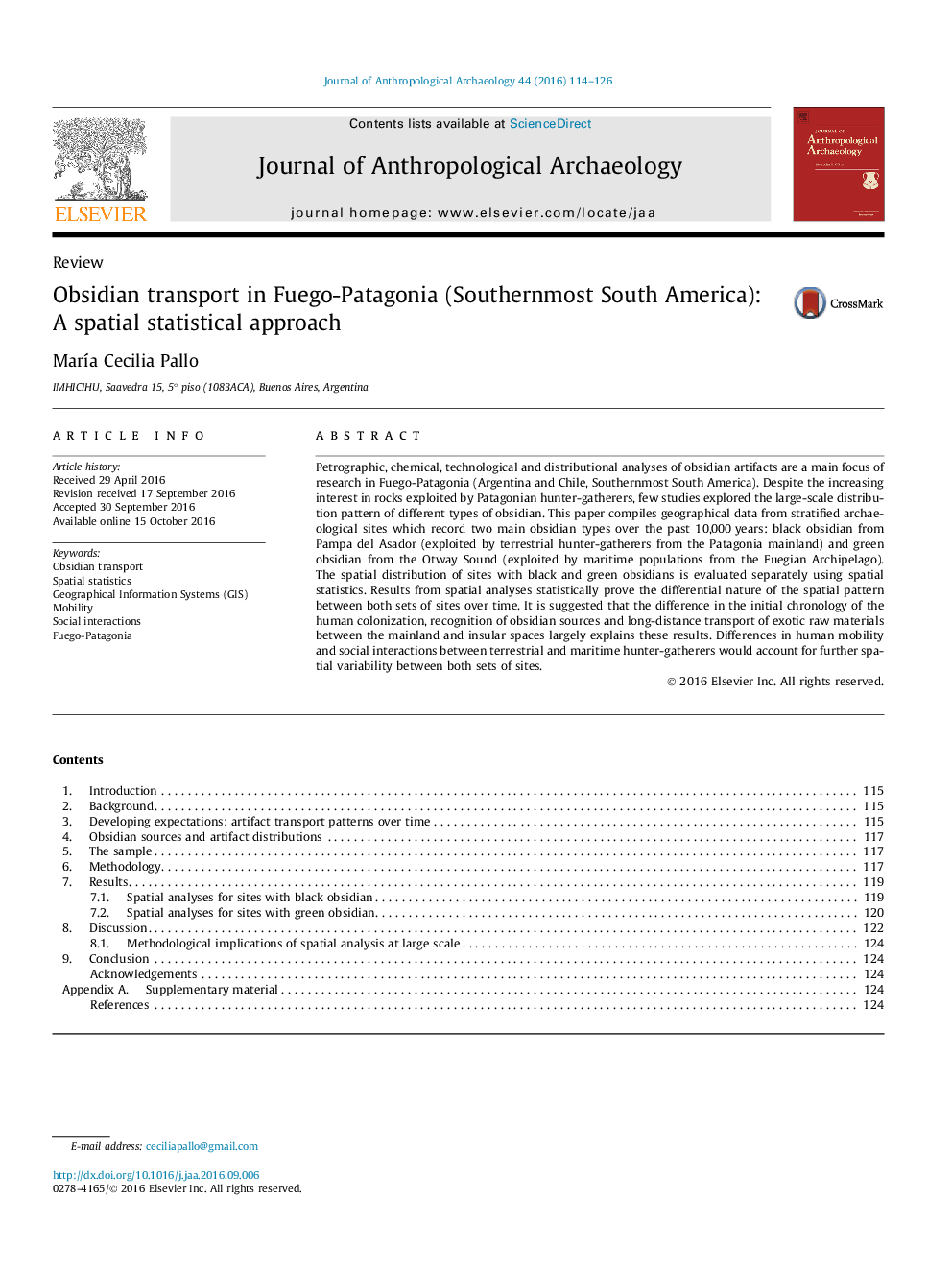| Article ID | Journal | Published Year | Pages | File Type |
|---|---|---|---|---|
| 6481324 | Journal of Anthropological Archaeology | 2016 | 13 Pages |
â¢Spatial statistics applied to distributions of two main obsidians in Fuego-Patagonia.â¢Both black and green obsidian transport patterns varied in a different way over time.â¢The human peopling for mainland and island spaces is the main explanatory factor.â¢Human mobility and social interactions add more spatial variability.
Petrographic, chemical, technological and distributional analyses of obsidian artifacts are a main focus of research in Fuego-Patagonia (Argentina and Chile, Southernmost South America). Despite the increasing interest in rocks exploited by Patagonian hunter-gatherers, few studies explored the large-scale distribution pattern of different types of obsidian. This paper compiles geographical data from stratified archaeological sites which record two main obsidian types over the past 10,000Â years: black obsidian from Pampa del Asador (exploited by terrestrial hunter-gatherers from the Patagonia mainland) and green obsidian from the Otway Sound (exploited by maritime populations from the Fuegian Archipelago). The spatial distribution of sites with black and green obsidians is evaluated separately using spatial statistics. Results from spatial analyses statistically prove the differential nature of the spatial pattern between both sets of sites over time. It is suggested that the difference in the initial chronology of the human colonization, recognition of obsidian sources and long-distance transport of exotic raw materials between the mainland and insular spaces largely explains these results. Differences in human mobility and social interactions between terrestrial and maritime hunter-gatherers would account for further spatial variability between both sets of sites.
